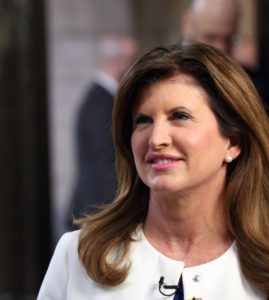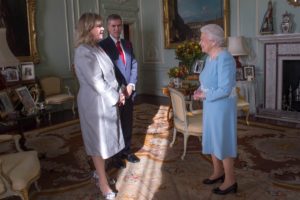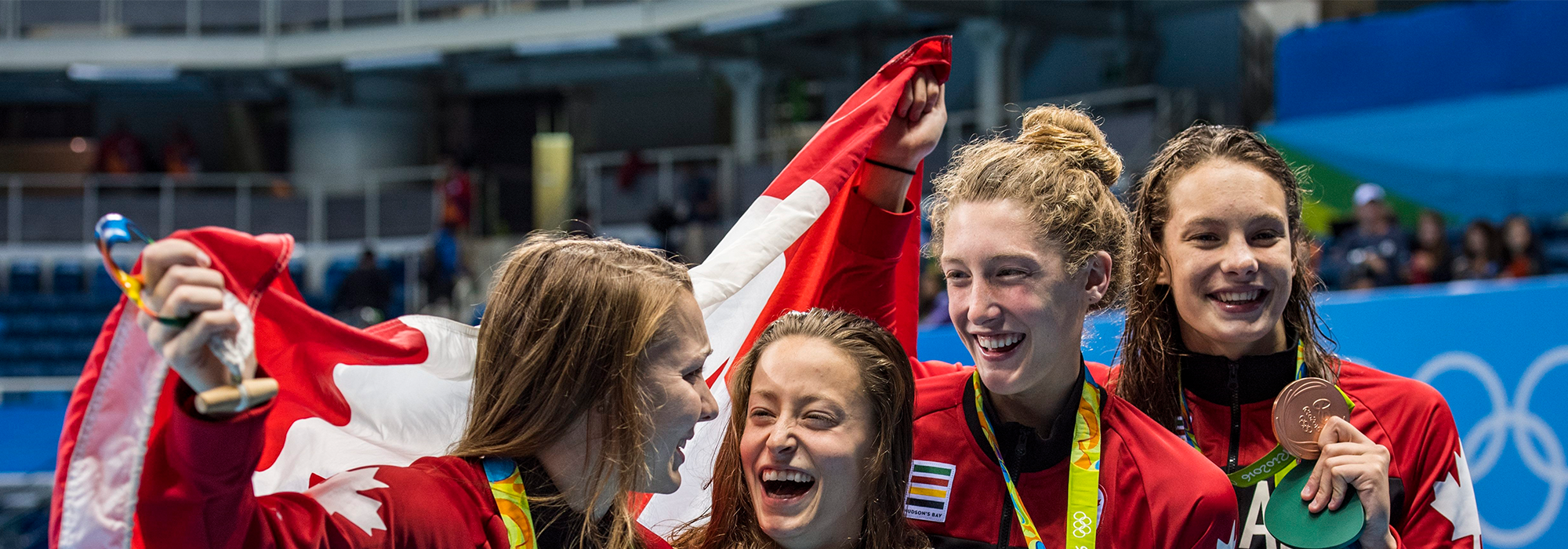
One of the most poignant moments of this emotionally charged week was Hillary Clinton’s message to the crestfallen young women of America who supported her bid for the presidency.
“Now, I know we have still not shattered that highest and hardest glass ceiling. But someday someone will and hopefully sooner than we might think right now,” she said.
Even in Canada, there was disappointment that an accomplished woman with an impressive resumé could not beat Donald Trump, a man with no record of public service, a thin policy platform and a dismal attitude towards the opposite sex.
But before this becomes too much of a downer, I’d argue that 2016 was a pretty great year for women in Canada. Setting aside the core issues that need a massive amount of work – namely pay equity, the dearth of women in corporate executive positions, the proportion of women in legislatures – there’s some cause to celebrate.
Cabinet
The highest-profile cabinet ministers in the Canadian government are now women. Think of Environment Minister Catherine McKenna, Justice Minister Jody Wilson-Raybould, Health Minister Jane Philpott and Trade Minister Chrystia Freeland. Whatever you think of the policies they are introducing and defending, nobody can accuse them of being less capable than their male counterparts in cabinet, or of requiring “adult supervision,” as Conservative trade critic Gerry Ritz suggested of Freeland. (As an aside, Freeland has been surrounded in her department by other senior women, including outgoing deputy Christine Hogan, chief trade commissioner Susan Bincoletto and associate deputy minister for trade policy and negotiation Kirsten Hillman.)
For the first time in our history, women have the priority portfolios in cabinet, and the faces the public is most likely to see on the nightly news, other than Justin Trudeau’s, are those of women. Although we’ve had women as deputy prime ministers and in the posts of foreign affairs, defence and justice, the critical mass just wasn’t there to change the overall image of the government. (Over the Stephen Harper years, the key spokespeople for the government in the Commons when the PM was absent were almost always men – Jason Kenney, John Baird, Pierre Poilievre, Paul Calandra, Peter Van Loan.)
There is already anecdotal evidence that the gender parity in cabinet, and beyond in government appointments, has had a wider impact. You hear talk of people who organize conferences being more careful about how they plan their panels and speakers, so as not to look out of step with the new government. Hopefully the normalization of the idea of women holding these most powerful positions will begin to rub off on the private sector as well. And perhaps there’s some chance more women will want to run for federal seats in the next election.
The official opposition
Interim Conservative Party Leader Rona Ambrose has shone in her position, making use of her roots as a policy wonk, as well as her measured political style, to hold Trudeau to account. Ambrose has also moved the dial discernibly in the House, notably on the cause of Yazidi refugees fleeing ISIS. She continues to be an unabashed advocate for women and girls (she was instrumental in founding the International Day of the Girl while in the Harper government).

Ambrose’s choice of finance critic, Lisa Raitt (who is now running for the Conservative leadership), was also significant. The position of federal finance minister is Canada’s political glass ceiling, and having Raitt face off against Bill Morneau had its share of interesting optics.
And on the subject of leadership races, although only two women are running (Raitt and Kellie Leitch), they are no longer dismissed as credible candidates by the media as were Diane Ablonczy when she ran for the Canadian Alliance in 2002, Belinda Stronach when she ran for the Conservatives in 2004, and Peggy Nash and Niki Ashton when they ran for the NDP in 2012.
Other bright spots
There were other significant wins for women in Canada this year.
After its recent election, the Yukon now has the second largest proportion of women in a Canadian legislature (after British Columbia).
Senior public servants Christine Hogan and Nancy Horsman are the new executive directors of the World Bank Group and the International Monetary Fund, respectively, responsible for not only Canada but also Ireland, nine Caribbean countries, Belize and Guyana.

Janice Charette, formerly clerk of the Privy Council, became the second woman in history to hold the position of Canadian High Commissioner to the United Kingdom. (The first was Jean Casselman Wadds, more than 30 years ago.)
A national inquiry was launched this year into missing and murdered Aboriginal women and girls.
The CBC’s Rosemary Barton became the host of a political program on a major TV network, a domain usually dominated by men.
Tatiana Maslany won an Emmy for her role in the Canadian-produced drama “Orphan Black.”

Irish-Canadian writer Emma Donoghue’s screenplay for the movie adaptation of her novel Room was nominated for an Oscar.
If the prospect of rolling back reproductive rights and access to Planned Parenthood services in the United States makes you cringe, consider that both Prince Edward Island and New Brunswick are actively studying how to make it easier for women to gain access to abortion services.
And hey, who can forget about our Canadian women athletes at the Olympic Games in Brazil, who were responsible for 87 percent of our medal haul?
There is much work to be done, even now, 100 years after women in Manitoba became the first to gain the right to vote. But before you get too depressed at what’s happening south of the border, spare a thought for the accomplishments of our women here at home.
Photo: John Lehmann/The Globe and Mail/Canadian Press
This article is part of The US Presidential Election special feature.
Do you have something to say about the article you just read? Be part of the Policy Options discussion, and send in your own submission. Here is a link on how to do it. | Souhaitez-vous réagir à cet article ? Joignez-vous aux débats d’Options politiques et soumettez-nous votre texte en suivant ces directives.









